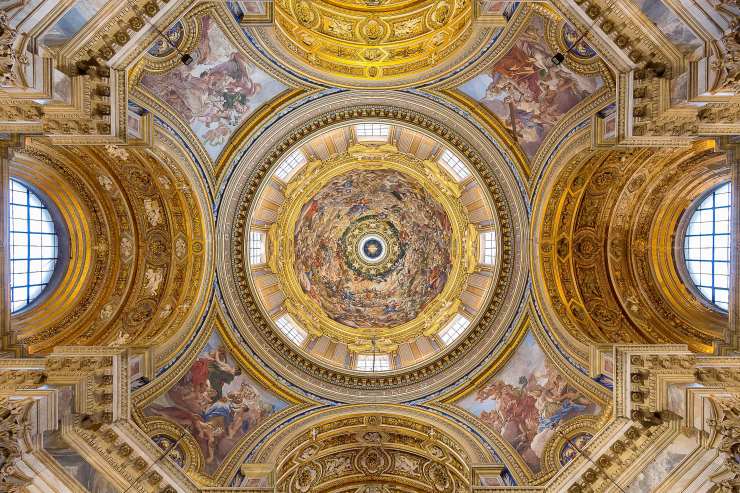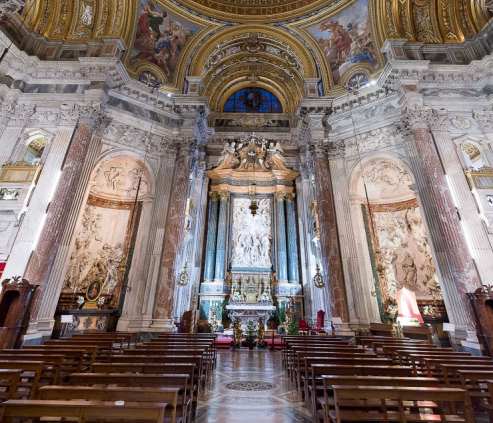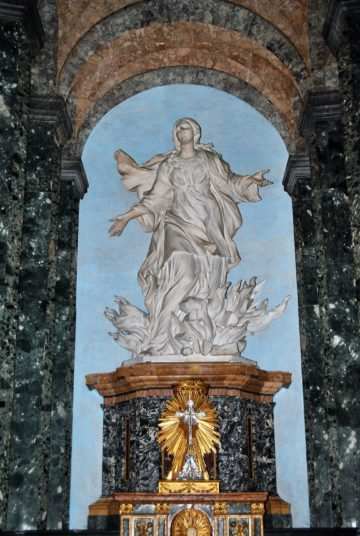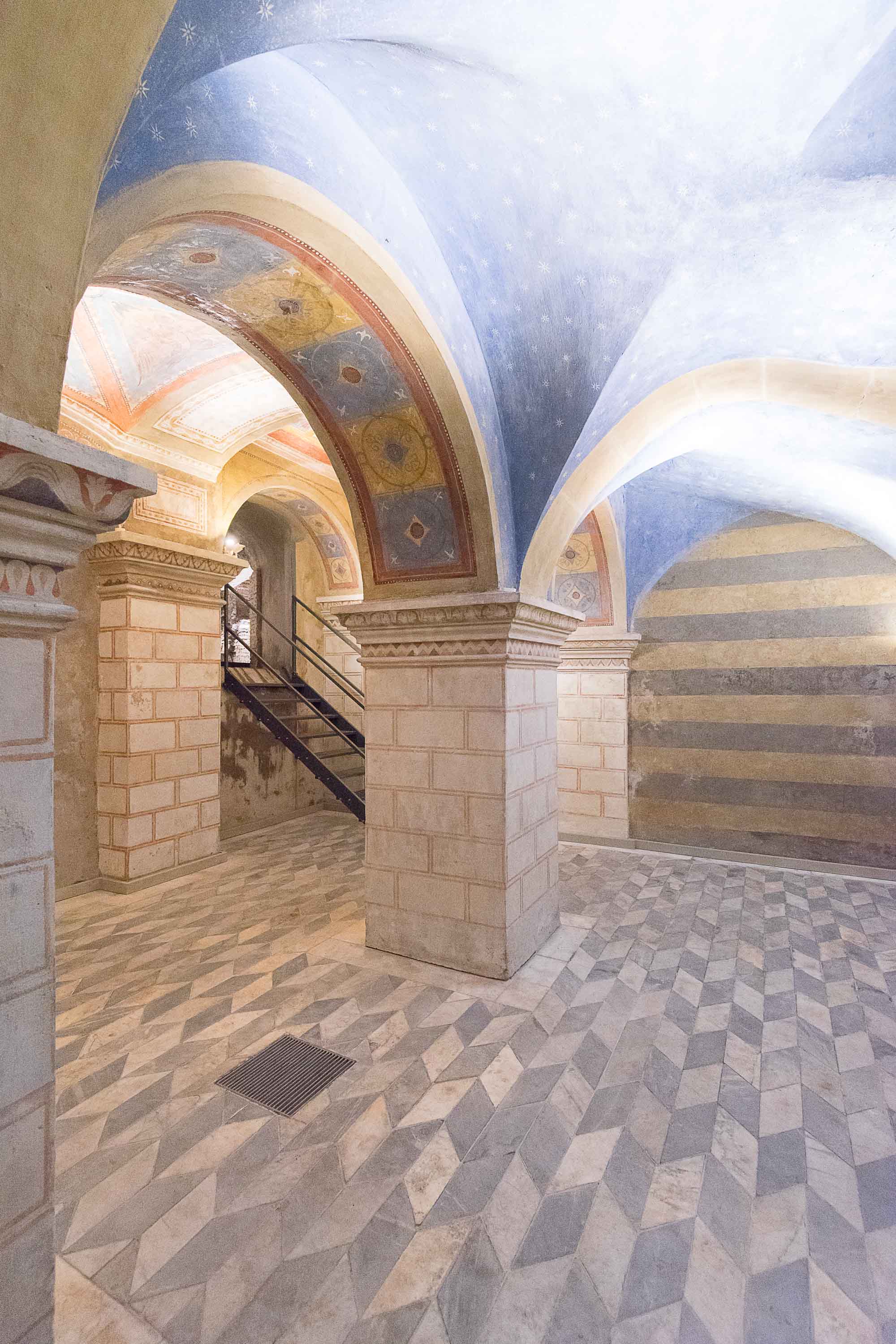The church dedicated to one of the most popular Roman martyrs, killed in year 304, during the last period of the persecution of Diocleziano.
The figure of this Saint stood out for the strength of will in defending their values and devotion to God by sacrificing their own lives.
Whether you are curious tourists or pilgrims looking for inspiration, the Church of Sant'Agese in Agone will welcome you ready to offer you an unforgettable experience.
NB: the small area of the crypt and the altar are currently closed to visits due to restoration of the frescoes.
In 1652 Innocent X Pamphili, thought of a new construction in place of the ancient Church of S. Agnese.
The task was entrusted initially to the architect Girolamo Rainaldi, but soon the pontiff relieved him of the task entrusting it to Francesco Borromini, who took care of it until 1657.
With Pope Alexander VII a commission was established to investigate any errors of Borromini, which led the architect to abandon the works and to recall Carlo Rainaldi who altered the project of Borromini. In 1667 Donna Olimpia Maidalchini, widow of Innocent X’s brother, commissioned Bernini with the general finishing work, while Giovanni Maria Baratta executed the bell towers and Giuseppe Baratta the staircase. The changes made by Bernini only affected the interior.
Opening hours:
from tuesdays to saturdays
Morning: from 9:00 a.m. to 1:00 p.m (last entry at 12:30)
Afternoon: from 3.00 p.m. to 6:00 p.m. (last entry at 5:30 p.m.)
Accessibility
Free ticket

The Greek cross plant presents an octagon with the entrance, the apse and two side chapels on the main axes.
On the remaining sides of the octagon, diagonal to the arms, are four altar niches inserted between pairs of columns in Cottanello red marble. Within these are altars worked in precious marbles, surmounted by sculpted panels. Both the altarpieces and ceilings of the niches were executed according to an overall plan prepared in part by Alessandro Algardi. The altars were still incomplete when Algardi died in 1654, and the works were completed by his students.
When Innocent X died, his remains were moved to the tomb built in the church of Sant'Agnese in Agone.
In facts, its monument is located above the entrance of the church.
Inside are also visible four altars dedicated to Sant' Alessio (1 on the right) Santa Emerenziana (2 on the right) Sant' Eustachio (1 on the left) and Santa Cecilia (2 on the left).
hide
Initially the altar was to be dedicated to the titular saint and the apse altarpiece, commissioned to Algardi, was to depict a miracle of Saint Agnes.
Following the artist's death, Domenico Guidi was commissioned to create the altarpiece, which was officially displayed in 1688.
The large white marble relief depicts, with vibrant vivacity and compelling compactness, the Holy Family with St. Elizabeth, St. John and Zachariah.
Instead, construction work on the altar began in the 18th century, based on a design by Carlo Rainaldi.
On the four antique green columns rests a tympanum surmounted by angels bearing a dove, with the palm symbol of martyrdom.
hide
Following the architectural modification that the Church of St. Agnes in Agone underwent after the death of Pope Innocent X Pamphili, it was deemed appropriate to dedicate not the high altar to the Saint but a chapel closer to the site of her martyrdom.
Against a background of mock perspective stands the statue of St. Agnes, with which Ferrata reproposes, in the setting of the figure of the Saint, a design by Bernini.
The author of the splendid stuccoes that decorate the chapel is Paolo Landini who worked in the church between 1662 and 1664 together with Giovanni Battista Ferrabosco and Giovanni Francesco Rosi.
hide
Going down the stairs of the Crypt there is a work of Algardi depicting St. Agnes with an Angel. Next is a plaque with this inscription: "INGRESSA AGNES HUNC TURPITUDINIS ANGELUM DOMINI PREPARATUM INVENIT" "Entrance of the place of turpitudini where the Angel sent by God intervened to save Agnese".
The crypt is divided into three rooms.
The first, larger, is divided into a large room with two pillars that support three arches. The other two rooms face Piazza Navona, and correspond to the crypt of the medieval church. On the wall of the staircase that descends to the crypt, there is a seventeenth-century fresco depicting Saint Agnes supported by the angel. Below the painting is a marble slab that Papa Damaso (366-384) had engraved, later used as a floor slab.
hide